
The Majestic Columbia River Gorge: Nature's Masterpiece in Oregon
Explore the Columbia River Gorge in Oregon – a paradise for nature lovers with scenic waterfalls, hiking trails, and vibrant local culture.
The Columbia River Gorge in Oregon is a breathtaking canyon that stretches for over 80 miles, forming part of the boundary between Washington and Oregon. Famous for its stunning vistas, cascading waterfalls, and lush greenery, it is a haven for nature lovers and adventure seekers alike. The Gorge offers a diverse array of recreational activities such as hiking, windsurfing, and kayaking, making it a perfect destination for outdoor enthusiasts. One of the most iconic sites within the Gorge is Multnomah Falls, a 620-foot waterfall that captivates visitors with its sheer beauty. The trail to the top provides awe-inspiring views and a sense of tranquility amidst the sounds of rushing water. Another must-see location is the Historic Columbia River Highway, a scenic byway that offers panoramic views and access to numerous hiking trails and overlooks. The region is not just about natural beauty; it also boasts a rich history and vibrant local culture. Small towns like Hood River are known for their charming downtown areas filled with boutique shops, breweries, and eateries. The Gorge is also a prime spot for wine tasting, with several vineyards offering tours and tastings of locally produced wines. Whether you're looking to explore the great outdoors or immerse yourself in local culture, the Columbia River Gorge has something for everyone.
Local tips in Columbia River Gorge
- Visit in spring or fall for mild weather and fewer crowds.
- Wear comfortable hiking shoes; many trails are rocky and uneven.
- Check for any trail closures or conditions before heading out.
- Bring a camera for the stunning scenery and wildlife sightings.
- Stop by local wineries for a unique tasting experience.
The Majestic Columbia River Gorge: Nature's Masterpiece in Oregon
The Columbia River Gorge in Oregon is a breathtaking canyon that stretches for over 80 miles, forming part of the boundary between Washington and Oregon. Famous for its stunning vistas, cascading waterfalls, and lush greenery, it is a haven for nature lovers and adventure seekers alike. The Gorge offers a diverse array of recreational activities such as hiking, windsurfing, and kayaking, making it a perfect destination for outdoor enthusiasts. One of the most iconic sites within the Gorge is Multnomah Falls, a 620-foot waterfall that captivates visitors with its sheer beauty. The trail to the top provides awe-inspiring views and a sense of tranquility amidst the sounds of rushing water. Another must-see location is the Historic Columbia River Highway, a scenic byway that offers panoramic views and access to numerous hiking trails and overlooks. The region is not just about natural beauty; it also boasts a rich history and vibrant local culture. Small towns like Hood River are known for their charming downtown areas filled with boutique shops, breweries, and eateries. The Gorge is also a prime spot for wine tasting, with several vineyards offering tours and tastings of locally produced wines. Whether you're looking to explore the great outdoors or immerse yourself in local culture, the Columbia River Gorge has something for everyone.
When is the best time to go to Columbia River Gorge?
Unmissable attractions to see
Crown Point State Scenic Corridor
Experience the breathtaking views and rich history at Crown Point State Scenic Corridor, a must-visit destination in the Columbia River Gorge.

Memaloose State Park
Explore Memaloose State Park, a serene haven in the Columbia River Gorge, offering hiking, picnicking, and stunning views of nature’s beauty.

Rooster Rock State Park
Explore Rooster Rock State Park: A Scenic Oasis in the Columbia River Gorge for Outdoor Enthusiasts and Nature Lovers.

Bridal Veil Falls State Scenic Viewpoint
Experience the beauty of Bridal Veil Falls, a stunning state park in Oregon's Columbia River Gorge, perfect for nature lovers and scenic adventures.
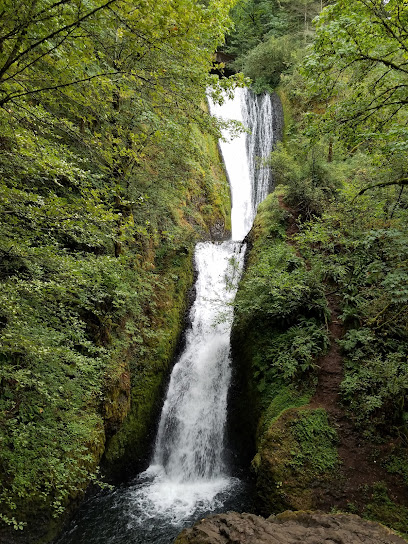
Bridal Veil Falls
Explore the breathtaking Bridal Veil Falls, a stunning natural wonder in Oregon perfect for hiking, photography, and nature lovers.
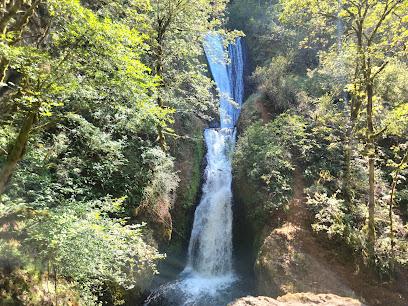
Cascade Locks Marine Park
Discover the serene beauty of Cascade Locks Marine Park, a natural paradise in Oregon offering scenic trails, picnic spots, and stunning views of the Columbia River Gorge.

Cascade Locks Marine Park
Explore Cascade Locks Marine Park: A serene oasis of nature and recreation in the heart of the Columbia River Gorge, perfect for outdoor enthusiasts and families alike.

Multnomah Falls Recreation Area
Explore the breathtaking Multnomah Falls, a natural wonder in Oregon's Columbia River Gorge, offering stunning views and serene hiking trails.

Hood River Waterfront Park
Experience the beauty of Hood River Waterfront Park, a perfect destination for picnics, outdoor activities, and breathtaking views of the Columbia River Gorge.

Western Antique Aeroplane and Automobile Museum (WAAAM)
Explore the fascinating history of aviation and automobiles at the Western Antique Aeroplane and Automobile Museum in Hood River, Oregon.

White River Falls State Park
Experience the breathtaking beauty of White River Falls State Park, a must-visit destination for nature lovers and adventurers in Oregon.

Latourell Falls
Witness the breathtaking beauty of Latourell Falls, a stunning waterfall in the Columbia River Gorge, perfect for hiking and nature photography.

Sternwheeler Columbia Gorge
Experience the breathtaking beauty of the Columbia River Gorge aboard the historic Sternwheeler Columbia Gorge, a must-visit for nature lovers and adventurers alike.

Hood River Event Site
Explore Hood River Event Site, a premier destination for water sports and outdoor fun surrounded by breathtaking views of the Columbia River and the Cascade Mountains.

Apple Valley Country Store
Experience the charm of Apple Valley Country Store in Hood River, Oregon, where delicious baked goods and homemade ice cream await every visitor.

Essential places to dine
Multnomah Falls Lodge
Discover breathtaking views and delicious dining at Multnomah Falls Lodge in Oregon's stunning Columbia River Gorge.

McDonald's
Discover quick and affordable dining at McDonald's in Hood River—perfect for travelers exploring Oregon's stunning scenery.

The Gorge White House
Experience local wines, craft beers, and delicious farm-to-table cuisine at The Gorge White House in Hood River Valley.

Columbia Gorge Hotel & Spa
Discover luxury and natural beauty at Columbia Gorge Hotel & Spa - your perfect getaway in Oregon's breathtaking landscape.

Grace Su's China Gorge Restaurant
Experience authentic Chinese cuisine with stunning river views at Grace Su's China Gorge Restaurant in Hood River.

Twin Peaks Drive In
Experience delicious hamburgers and creamy ice cream at Twin Peaks Drive In, Hood River's favorite American diner.

Farm Stand in the Gorge
Discover fresh organic produce and delicious meals at Farm Stand in the Gorge - a perfect spot for food lovers visiting Hood River.
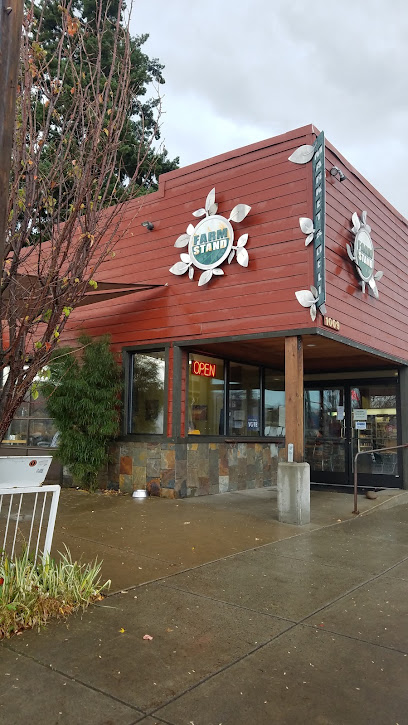
Simon's Cliff House
Dine with stunning views at Simon's Cliff House in Hood River – where delicious food meets breathtaking scenery.

Markets, malls and hidden boutiques
Columbia Gorge Outlets
Discover unbeatable deals and stunning views at Columbia Gorge Outlets, Oregon's premier shopping destination.

Walmart
Experience the convenience of Walmart in Hood River, where you can find everything from groceries to electronics at affordable prices.

The Gorge White House
Discover the flavors of Oregon at The Gorge White House, a charming destination for wine lovers, food enthusiasts, and nature admirers.

Apple Valley Country Store
Discover the charm of Apple Valley Country Store in Hood River, Oregon—where fresh-baked treats and creamy ice cream create unforgettable moments.

Farm Stand in the Gorge
Discover fresh, organic produce and delicious meals at Farm Stand in the Gorge, Hood River's local gem for food enthusiasts and nature lovers.

True Gorge Stoves & Spas
Discover your perfect fireplace, hot tub, or heating solution at True Gorge Stoves & Spas in scenic Hood River, Oregon.

Columbia Factory Store
Discover unbeatable deals on premium outdoor apparel at Columbia Factory Store in Troutdale, Oregon – the ultimate destination for adventure seekers.

Rocky Mountain Chocolate Factory
Discover a delightful world of handcrafted chocolates and sweets at the Rocky Mountain Chocolate Factory in Oregon. Perfect for gifts and personal indulgence.

Gorge Fly Shop
Discover the best fishing gear and expert guidance at Gorge Fly Shop in Hood River, Oregon, your ultimate destination for outdoor adventure.

Discover Bicycles
Unlock the beauty of Hood River with Discover Bicycles, your go-to shop for bike rentals and expert repairs in Oregon's stunning landscapes.

Columbia Center For the Arts
Explore the artistic pulse of Hood River at the Columbia Center for the Arts, a vibrant hub for art exhibitions and performances.

The Ruddy Duck
Discover unique clothing, gifts, and home goods at The Ruddy Duck in Hood River, a charming store with local flair.

Columbia Gorge Chocolates
Discover the sweet enchantment of Columbia Gorge Chocolates, where artisanal treats and chocolate delights await in Hood River, Oregon.

Columbia River Gorge
Experience breathtaking landscapes and outdoor adventures at the stunning Columbia River Gorge in Oregon, a must-visit for every nature lover.

Artistree NW
Explore Artistree NW in Troutdale, OR – a charming gift shop filled with unique, handcrafted treasures celebrating local artistry and craftsmanship.

Essential bars & hidden hideouts
Multnomah Falls Lodge
Experience the enchanting beauty of Multnomah Falls Lodge, a perfect blend of nature and comfort in Oregon's Pacific Northwest.

Ferment Brewing Company
Experience the best of craft beer and local cuisine at Ferment Brewing Company in Hood River, Oregon, surrounded by stunning natural beauty.

Riverside
Discover Riverside in Hood River, Oregon - where breathtaking river views meet delicious local cuisine in a vibrant atmosphere.

pFriem Family Brewers
Experience the finest craft beers and stunning views at pFriem Family Brewers in Hood River, where tradition meets innovation.

KickStand Coffee & Kitchen
Experience the best of New American cuisine and artisanal coffee at KickStand Coffee & Kitchen in Hood River, Oregon.

Double Mountain Brewery
Discover the best of craft brewing at Double Mountain Brewery in Hood River, where exceptional beers and delicious pizzas await.

Thunder Island Brewing Co
Discover handcrafted beers and breathtaking river views at Thunder Island Brewing Co, a must-visit brewery in Cascade Locks, Oregon.
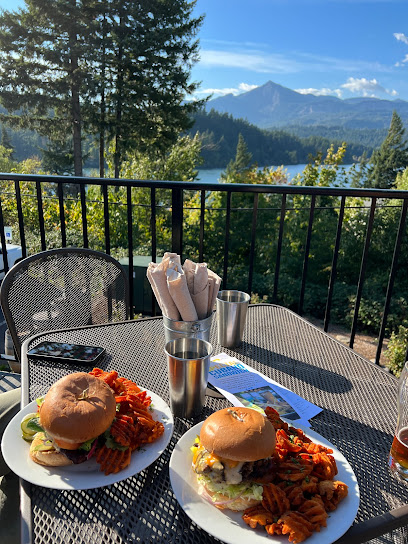
The Gorge White House
Discover the flavors of Hood River at The Gorge White House, where local wines, craft beers, and fresh produce come together in a beautiful setting.

3 Rivers Grill
Experience the best of Hood River dining at 3 Rivers Grill, where stunning views meet delicious American cuisine in a charming setting.
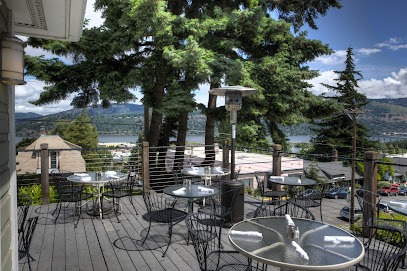
Full Sail Brewing Company
Discover the heart of Oregon's craft beer scene at Full Sail Brewing Company, where flavor and stunning views come together in Hood River.

Cascade Locks Ale House
Discover Cascade Locks Ale House, where local craft beers and hearty pub fare meet stunning views of the Columbia River Gorge.

The Sixth Street Bistro & Pub
Discover the flavors of Hood River at The Sixth Street Bistro & Pub, where bistro elegance meets pub comfort in a stunning Oregon setting.

Tilly Jane's Sports Bar & Grill
Discover the perfect blend of delicious grill fare and vibrant sports atmosphere at Tilly Jane's Sports Bar & Grill in Hood River, Oregon.
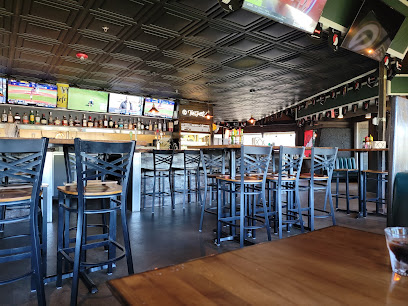
Trillium Café
Discover the charm of Trillium Café in Hood River, where delicious food meets a cozy atmosphere, perfect for relaxing after exploring the beautiful surroundings.
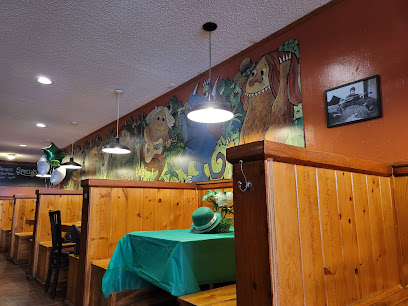
Celilo Restaurant & Bar
Experience fine dining at Celilo Restaurant & Bar, where local ingredients meet exquisite American cuisine in the heart of Hood River, Oregon.

Local Phrases about Columbia River Gorge
-
- HelloHola
[oh-lah] - GoodbyeAdiós
[ah-dee-ohs] - YesSí
[see] - NoNo
[noh] - Please/You're welcomePor favor/De nada
[por fah-vor/de nah-dah] - Thank youGracias
[grah-see-ahs] - Excuse me/SorryDisculpe/Lo siento
[dee-skool-pe/loh see-en-toh] - How are you?¿Cómo estás?
[koh-moh es-tahs] - Fine. And you?Bien. ¿Y tú?
[byen. ee too] - Do you speak English?¿Hablas inglés?
[ah-blahs een-glays] - I don't understandNo entiendo
[noh en-tee-en-doh]
- HelloHola
-
- I'd like to see the menu, pleaseMe gustaría ver el menú, por favor
[may goo-stah-ree-ah ver el meh-noo, por fah-vor] - I don't eat meatNo como carne
[noh koh-moh kahr-neh] - Cheers!¡Salud!
[sah-lood] - I would like to pay, pleaseQuisiera pagar, por favor
[kee-see-eh-rah pah-gar, por fah-vor]
- I'd like to see the menu, pleaseMe gustaría ver el menú, por favor
-
- Help!¡Ayuda!
[ah-yoo-dah] - Go away!¡Vete!
[veh-teh] - Call the Police!¡Llama a la Policía!
[yah-mah ah lah poh-lee-see-ah] - Call a doctor!¡Llama a un médico!
[yah-mah ah oon meh-dee-koh] - I'm lostEstoy perdido
[es-toy pair-dee-doh] - I'm illEstoy enfermo
[es-toy ehn-fehr-moh]
- Help!¡Ayuda!
-
- I'd like to buy...Me gustaría comprar...
[may goo-stah-ree-ah kohm-prar] - I'm just lookingSólo estoy mirando
[soh-loh es-toy mee-rahn-doh] - How much is it?¿Cuánto cuesta?
[kwan-to kweh-stah] - That's too expensiveEso es muy caro
[eh-soh es moo-ee kah-roh] - Can you lower the price?¿Puedes bajar el precio?
[pweh-dehs bah-har el pree-syoh]
- I'd like to buy...Me gustaría comprar...
-
- What time is it?¿Qué hora es?
[keh oh-rah es] - It's one o'clockEs la una
[es lah oo-nah] - Half past (10)Las diez y media
[lahs dee-ehs ee meh-dee-ah] - MorningMañana
[mah-nyah-nah] - AfternoonTarde
[tahr-deh] - EveningNoche
[noh-cheh] - YesterdayAyer
[ah-yehr] - TodayHoy
[oy] - TomorrowMañana
[mah-nyah-nah] - 1Uno
[oo-noh] - 2Dos
[dohs] - 3Tres
[trehs] - 4Cuatro
[kwah-troh] - 5Cinco
[seen-koh] - 6Seis
[say-ees] - 7Siete
[syeh-teh] - 8Ocho
[oh-choh] - 9Nueve
[nweh-veh] - 10Diez
[dee-ehs]
- What time is it?¿Qué hora es?
-
- Where's a/the...?¿Dónde está el/la...?
[dohn-deh ehs-tah el/lah] - What's the address?¿Cuál es la dirección?
[kwal es lah dee-rehk-syohn] - Can you show me (on the map)?¿Puedes mostrarme (en el mapa)?
[pweh-dehs mohs-trar-meh (en el mah-pah)] - When's the next (bus)?¿Cuándo es el próximo (autobús)?
[kwan-doh es el proh-ksee-moh (ow-toh-boos)] - A ticket (to ....)Un boleto (para ...)
[oon boh-leh-toh (pah-rah)]
- Where's a/the...?¿Dónde está el/la...?
History of Columbia River Gorge
-
The Columbia River Gorge was carved out over millions of years through geological forces, primarily by the Missoula Floods around 15,000 to 13,000 years ago. These cataclysmic floods, caused by the repeated breaking of an ice dam in present-day Montana, released massive amounts of water that sculpted the dramatic cliffs and waterfalls that we see today.
-
For thousands of years, the Columbia River Gorge has been home to various Native American tribes, including the Multnomah, Wasco, and Wishram tribes. These tribes utilized the river for fishing, particularly for salmon, which was a staple of their diet and a central part of their culture. The Gorge area served as a major trading route and cultural exchange point for these communities.
-
In 1805-1806, the Lewis and Clark Expedition traversed the Columbia River Gorge on their journey to the Pacific Ocean. Their passage through the Gorge was both a triumph and a challenge, as they navigated the treacherous waters and steep cliffs. Their detailed journals provided some of the first documented accounts of the region's geography and native peoples.
-
During the mid-19th century, the Columbia River Gorge was a critical segment of the Oregon Trail. Thousands of pioneers traveled through the Gorge as they headed westward in search of new opportunities. The Barlow Road, an alternative route to the treacherous Columbia River rapids, was established to facilitate safer passage for these settlers.
-
Built between 1913 and 1922, the Historic Columbia River Highway was the first scenic highway in the United States. Designed by engineer Samuel C. Lancaster, the highway was an engineering marvel of its time, offering breathtaking views of the Gorge's natural beauty and providing greater access to its numerous waterfalls and scenic vistas.
-
Completed in 1937 as part of President Franklin D. Roosevelt's New Deal, the Bonneville Dam was constructed to provide hydroelectric power, improve navigation, and create jobs during the Great Depression. The dam dramatically altered the Columbia River, impacting local ecosystems and communities, but it also played a pivotal role in the economic development of the Pacific Northwest.
-
In 1986, the Columbia River Gorge National Scenic Area Act was passed to protect the Gorge's unique environmental, cultural, and recreational resources. This legislation established the Gorge as a protected area, balancing conservation efforts with responsible development and tourism, ensuring the preservation of its natural and historical treasures for future generations.
Columbia River Gorge Essentials
-
The Columbia River Gorge is located in Oregon, United States. The nearest major airport is Portland International Airport (PDX), approximately 60 miles west of the Gorge. From the airport, you can rent a car, take a shuttle service, or use ride-sharing options to reach the Gorge. The drive typically takes about 1-1.5 hours via I-84 East.
-
While exploring the Columbia River Gorge, having a car is highly recommended due to the region's vast and spread-out attractions. Rental cars are available at Portland International Airport and in downtown Portland. If you prefer not to drive, guided tours are available that provide transportation to key sites. Bicycle rentals are also an option for those wanting to experience the Gorge's scenic trails.
-
The official currency is the United States Dollar (USD). Credit and debit cards are widely accepted throughout the region, including at hotels, restaurants, and most attractions. However, it is advisable to carry some cash for smaller establishments, local markets, and remote areas where card payment may not be available. ATMs are readily accessible in larger towns like Hood River and Cascade Locks.
-
The Columbia River Gorge is generally a safe destination for tourists. However, it is wise to take standard precautions such as not leaving valuables in your car and being aware of your surroundings, especially in crowded areas. Crime rates targeting tourists are low, but always stay vigilant. Some areas, like parts of downtown Portland, have higher crime rates, so exercise caution and avoid walking alone at night.
-
In case of emergency, dial 911 for immediate assistance. The Gorge is serviced by local police, fire departments, and medical facilities, including hospitals in nearby cities like Hood River and The Dalles. It is recommended to have travel insurance that covers medical emergencies. For minor health issues, pharmacies are available in larger towns throughout the region.
-
Fashion: Do dress in layers and wear comfortable hiking shoes, as weather can change rapidly. Don't wear flip-flops on trails. Religion: Do respect any cultural or religious sites, including Native American heritage areas. Public Transport: Do note that public transport options are limited; plan accordingly. Greetings: Do greet people with a smile or a friendly nod. Eating & Drinking: Do try local delicacies like fresh salmon and local wines. Don't litter; keep the natural beauty of the Gorge pristine.
-
To experience the Columbia River Gorge like a local, visit the Hood River Farmers' Market for fresh produce and local crafts. Take advantage of the numerous hiking trails such as the Eagle Creek Trail or Dog Mountain for panoramic views. Wind-surfing and kiteboarding are popular activities in Hood River, known as the windsurfing capital of the world. For a unique experience, visit the historic Timberline Lodge on Mt. Hood.
Nearby Cities to Columbia River Gorge
-
Things To Do in The Dalles
-
Things To Do in Yakima
-
Things To Do in Tacoma
-
Things To Do in Auburn
-
Things To Do in Federal Way
-
Things To Do in Bend
-
Things To Do in Kent
-
Things To Do in Renton
-
Things To Do in Richland
-
Things To Do in Kennewick
-
Things To Do in Bellevue
-
Things To Do in Bremerton
-
Things To Do in Seattle
-
Things To Do in Redmond
-
Things To Do in Kirkland













